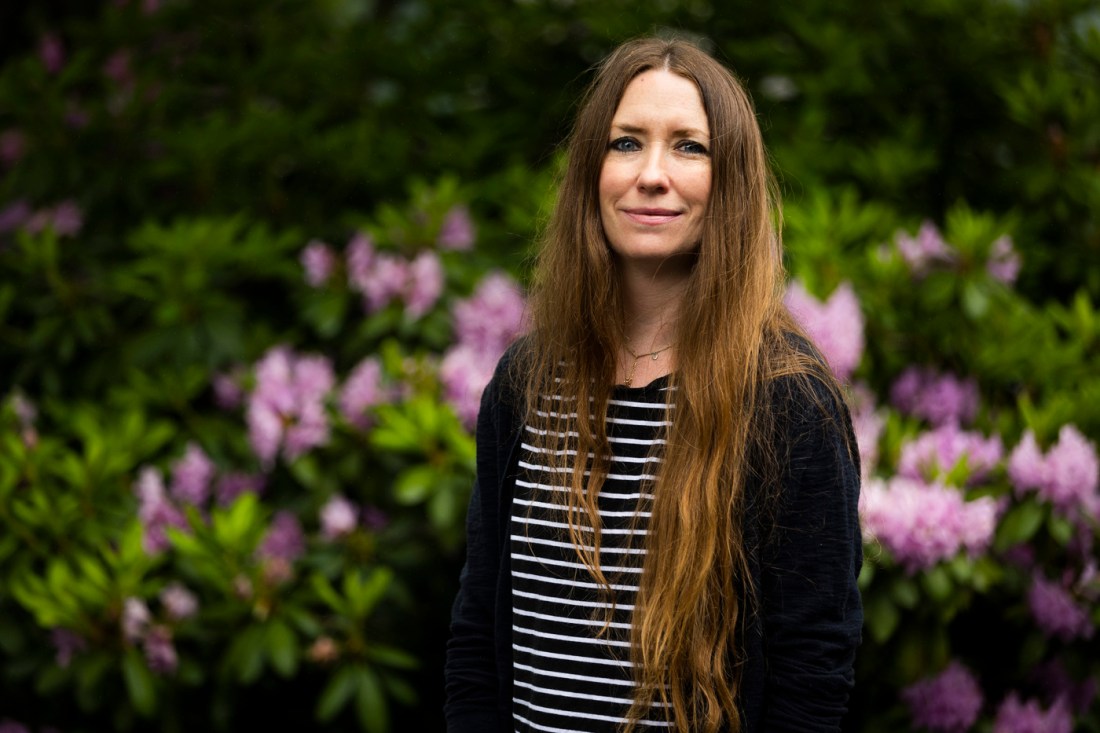Why ‘The Great Gatsby’ still resonates a century after publication
Northeastern distinguished professor of English Hillary Chute breaks down why the F. Scott Fitzgerald novel “beats on” on its 100-year anniversary.

April 10 marks 100 years since F. Scott Fitzgerald’s third novel hit shelves.
“The Great Gatsby,” which tells the story of the rise and fall of poor-man-turned-millionaire Jay Gatsby through the eyes of his friend, Nick Carraway, sold fewer than 40,000 copies between the time it was published and when Fitzgerald died 15 years later.
But the book took on a life of its own in the subsequent years, entering classrooms as part of curriculum in the 1950s. Today, it is one of the publisher’s best sellers, has a musical adaptation on Broadway, and is the theme of countless parties.
Why has this book, which was initially met with lukewarm reviews and sales, endured and become such a staple of American literature?
“This book is timeless, through and through,” says Northeastern University distinguished professor of English Hillary Chute. “This is a book about race. This is a book about class. This is a book about the carelessness of privileged people. This is a book about the capacity to have hope and the capacity to have imagination and the capacity to have wonder … something that is never not interesting to people. Nothing in this book feels dated.”
And, she adds, the writing of the book doesn’t hurt either. Chute said the book’s dialogue, structure and writing all lend to a rich experience reading it.
“It’s beautifully written,” she said. “It’s pitch perfect. Every sentence doesn’t use one more word than it needs to. … This book is so evocative and so poetic and yet so action-packed. Nothing is wasted. That’s a reason it gets taught a lot: it’s an example of brilliant novelistic writing.”

Chute, who is also a distinguished professor of art and design, counts “The Great Gatsby” among her favorite books and has done so since graduate school when she took a seminar on modernism. Now she teaches the book herself in Intro to Literary Studies.
“The Great Gatsby” is a staple in many high school classrooms and a lot of Chute’s students come in having read the book before and think they understand how it’s about the American dream. But she said the novel can be read again and again and interpreted each time with a new meaning, which has helped make it a classic.
“The American dream is a concept that gets taught at the high school level,” Chute said. “Students kind of latch on to that as being the message of ‘The Great Gatsby.’ … It just gets linked with this concept so much that people aren’t expecting it to be as good as it is when they read it a second time. … I like to try to do a lot of discussion about what this book is actually valuing.”
Chute shows her students that Fitzgerald leaves enough to the imagination that the novel can be read with different meanings. She points to a scene at the end of the book where Carraway mentions finding a slur written on Gatsby’s house. The book doesn’t say what the slur is, leaving it up to the reader’s interpretation and what this could’ve said about Gatsby and the message of the book as a whole.
The legacy of “The Great Gatsby” exists beyond the classroom. There have been countless adaptations across stage, film, television and even graphic novels, including the 2013 film directed by Baz Luhrman and the current musical adaptation playing on Broadway.
Editor’s Picks
Many of these adaptations focus on the parties in the novel, translating Fitzgerald’s vivid scenes into stunning visuals. But as such, “The Great Gatsby” is often associated with raging parties with flappers and champagne, Chute said.
“One of the reasons students have misconceptions about this book is because of all the movies,” said Chute. “I think directors love to stage all these parties and so that comes to stand in the popular imagination for what Gatsby is … and that’s not really what I think the book is about. It’s part of the book, but it’s not the core of the book.”
So what is Gatsby about? Each reading can reveal a different meaning.
The novel opens with Carraway explaining how his father told him to refrain from judging people because not everyone has had the same advantages as him and how that has shaped the way he views people, including Gatsby. In this lies a huge theme of the novel for Chute.
“We start off with this complicated set of assertions about how we value other people in this book, which is fascinating,” Chute said. “That’s where it begins and that’s sort of where it ends. It goes really deep into all sorts of ideas about why we value what we value in others.
“We know (from the introduction) that Nick has complicated, ambivalent feelings about Gatsby. He says Gatsby is the type of figure for whom he should have an unaffected scorn, but actually it’s only Gatsby who turned out all right in the end … because Gatsby has his capacity for hope.
“So for me it’s a lot about tying something like wonder, hope and imagination to this idea of what ‘America’ could be.”











